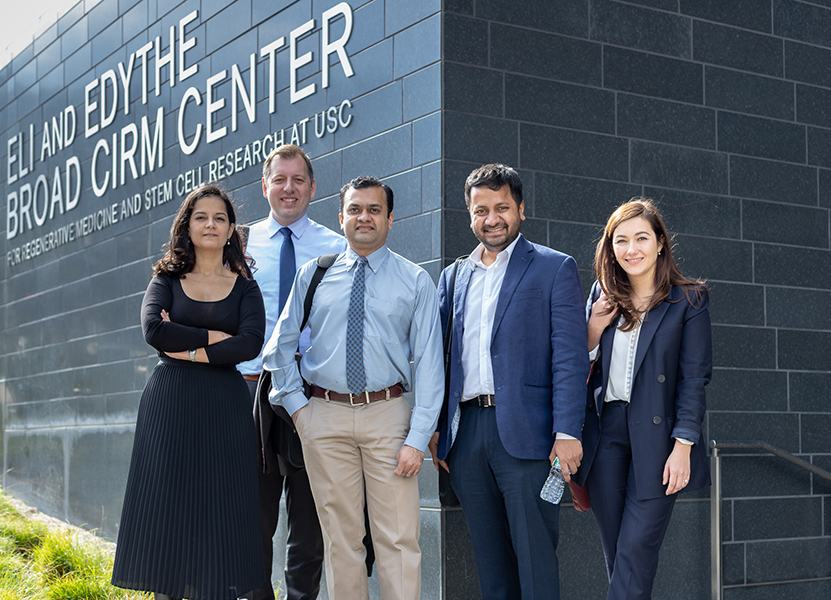
Cells should be treated as individuals, according to the scientists who presented research at the Junior Faculty Candidate Mini-symposium, hosted by USC’s Department of Stem Cell Biology and Regenerative Medicine on February 5. While cells have traditionally been evaluated as populations, these up-and-coming scientists shared their frontier approaches for studying the specific features and activities of individual cells.
Unmesh Jadhav from Harvard Medical School shared his discoveries about the specific types of cells responsible for the constant regeneration of the intestines. He found that regeneration relied not only on the small population of intestinal stem cells (ISCs), but also on an array of more mature cell types. These mature cells could still de-differentiate, or “rewind” their development to a more stem cell-like state, and join the ISCs in regenerating the intestines. In order to rewind the mature cells and tap into their regenerative potential, key developmental genes must be switched “on” or “off”—a process called epigenetic regulation. Jadhav intends to leverage epigenetic regulation to aid organ regeneration and regenerative therapies.
Anastasia Tikhonova from the New York University School of Medicine talked about the interactions of leukemia cells with specific cell types in the bone marrow. She found that cells in blood vessels in the bone marrow produce a signal, called CXCL12, necessary for the progression of T-cell acute lympoblastic leukemia. Tumors can no longer grow when this signal is deleted or tumor cells’ ability to receive the signal is blocked by drugs or other molecules.
Daniel Wagner from Harvard Medical School described how he mapped the trajectories of the individual cells of a zebrafish embryo during the first 24 hours of development. This revealed some surprises. According to the current developmental paradigm, the embryo initially forms three basic layers: “endoderm” that becomes the liver, pancreas and intestines; “mesoderm” that generates muscle, bone, the heart and reproductive organs; and “ectoderm” that creates skin, nerves and the brain. Instead, Wagner observed different preliminary groupings: cells that resembled both mesoderm and endoderm; neural-like cells; and skin-like cells. Furthermore, in tracing developmental trajectories, he observed unexpected “loops” where cells could take different intermediate paths to ultimately become the same type of specialized cell. He plans to continue to scrutinize the subtle cellular and molecular dynamics of early embryonic development.
Karthik Shehkar from the Broad Institute of MIT and Harvard mapped various cell types in the developing mouse retina. He then used this map to understand how specific cell types fare during optic nerve injury, and the molecular features that enable certain cell types to survive better than others. He also applied the map to understanding the relationships between different types of retinal cells, such as the distinct types of cone cells that detect green, red or blue. Lastly, he used the map to pinpoint evolutionary differences in the vision of macaques and mice.
Lina R. Nih from UCLA addressed a potential regenerative approach for treating brain damage resulting from stroke, the world’s third leading cause of death. She engineered a gel, containing a combination of an anti-inflammatory molecule and a protein called VEGF that promotes the growth of new blood vessels, which in turn might support the generation of new nerve cells. She then injected this gel into the stroke-damaged portions of mouse brains, and observed the growth of new blood vessels and new nerve cells—as well as the recovery of manual dexterity. She also discussed bioengineering approaches to optimize the transplantation of neural stem cells into stroke-damaged brains.
“This is one of the highlights of our year, where we get to hear some fantastic science from five stellar young scientists from outside of USC,” said Andy McMahon, chair of the Department of Stem Cell Biology and Regenerative Medicine. “I hope you enjoyed the day. I certainly did.”
